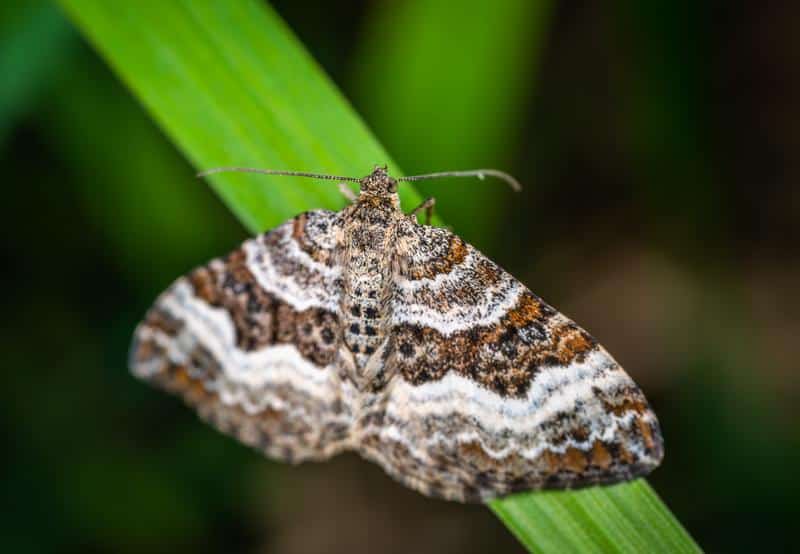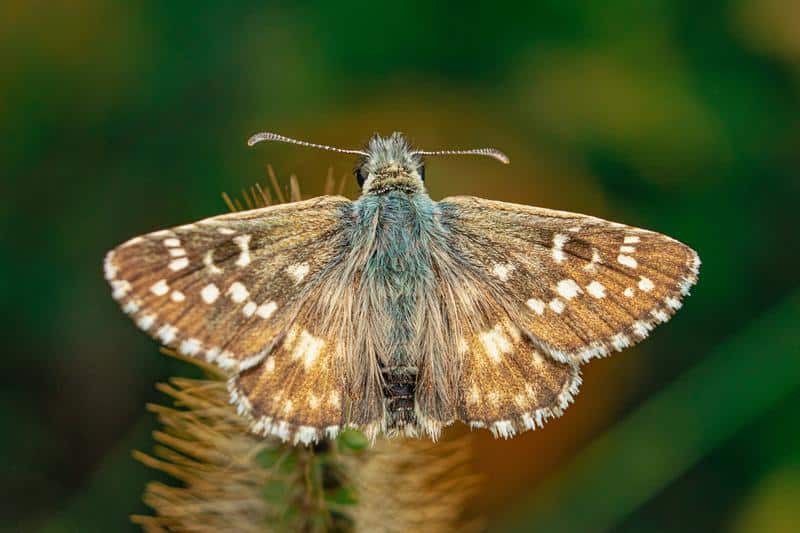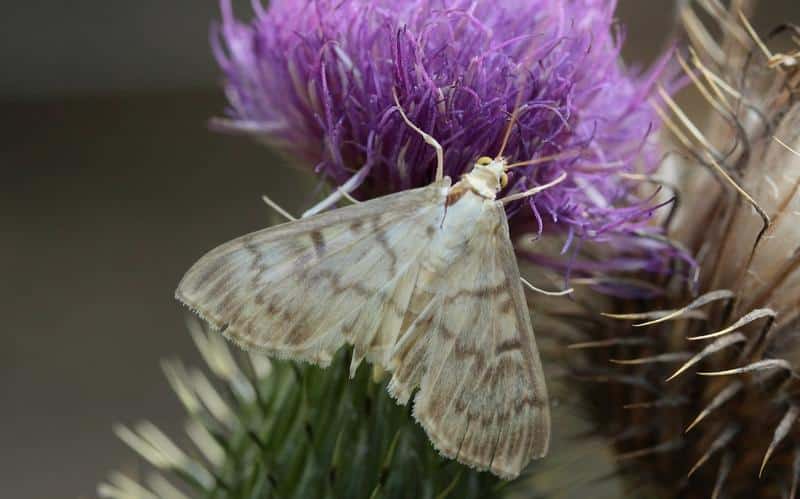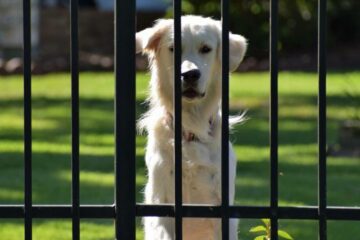Can Dogs Eat Moths? Are Moths Poisonous to Dogs? [Answered]
Can dogs eat moths? Are moths poisonous to dogs? In this article, we’ll answer everything you need to know about both of these questions, even covering specifics like are miller moths poisonous to dogs? That, of course, includes teaching you how to stop your dog eating moths. Finally, we’ll answer if moths can bite dogs and why do dogs try to catch moths. Keep reading!
Can Dogs Eat Moths?

Dogs can eat moths, though it’s not recommended. Moths are not nutritious for dogs and, in some cases, could lead to minor health issues like upset stomachs. Additionally, some moths and insects can carry parasites or be toxic if they have been in contact with pesticides.
My Dog Ate a Moth
If your dog ate a moth, there’s generally no need to panic. Most dogs won’t experience any adverse reactions. However, if the moth was large, it could potentially cause a blockage, especially in small dogs. Watch your dog for any signs of distress such as excessive drooling, vomiting, diarrhea, or changes in behavior. If you observe these signs, contact your vet immediately.
Risks of Dogs Eating Moths
While it’s rare, there are some risks with dogs eating moths. For instance, moths may have been in contact with pesticides, which could be harmful to your dog. Some moths and insects can also carry parasites that could infect your dog. Always monitor your dog and prevent them from eating moths when possible.
Training Dogs with “Leave It” Command
Training your dog with the “leave it” command can help prevent them from eating moths or other things they shouldn’t. Begin in a quiet environment with a treat in your closed hand. Say “leave it” and wait.
When your dog stops trying to get the treat and pulls away, reward them with a different treat. Repeat this process, gradually increasing the difficulty, such as placing the treat on the ground and covering it with your foot.
Stopping Dogs From Eating Moths
Keeping your dog on a leash during walks and monitoring them while they’re outside is another way to prevent them from eating moths. Providing your dog with a balanced diet can also ensure they’re not seeking out insects due to nutritional deficiencies.
These steps will get your dog to stop eating moths, but it’s important to remember that the underlying behavioral issues (prey drive, curiosity, overexcitement, etc.) that were causing all of this to begin with will still be present. And until you address those, any positive changes you see are only going to be temporary.
“Well, how do I make these changes last?”
By getting your dog to truly choose to follow your direction, that’s how. I tried many times to write out how you can do that before deciding it made more sense to just link you to the free video series that explains it better than I’d ever be able to.
The series is by a man named Dan who is one of the world’s leading dog obedience trainers. In it, he teaches you how to put an end to things like your dog eating moths and all other misbehavior using his fast and easy-to-follow methods.
In the first video, Dan will reveal to you why the two most common methods of dog training only doom you to failure. You can watch the video now by clicking here. Follow the proven system he’ll show you in his series and you’ll never have to spend another second worrying about your dog eating moths ever again!
Are Moths Poisonous to Dogs?

Moths are not poisonous to dogs, in general. However, some moths and insects can carry parasites or be toxic if they have been in contact with pesticides. It’s also worth noting that a dog’s reaction to eating a moth may vary based on its individual health and size.
Are Moths Toxic to Dogs?
Moths are not toxic to dogs, typically. Nevertheless, there can be exceptions. Some types of moths and butterflies, particularly those that are brightly colored, may contain toxins as a defense mechanism against predators.
Although such species are relatively rare, the amount of toxin present in a single moth is unlikely to cause significant harm to a dog. However, it’s always best to prevent your dog from eating anything other than its regular diet to avoid potential issues.
Are Miller Moths Poisonous to Dogs?
Miller moths are not poisonous to dogs. They are a type of cutworm moth quite common in North America. Like other moths, they could potentially carry parasites or pesticides that could be harmful if ingested, but the moths themselves are not inherently toxic.
If your dog has eaten a Miller moth, monitor them closely for any signs of discomfort or changes in behavior and contact a veterinarian if you have any concerns. Learn the command you need to prevent any further problems by going back to the first section.
Potential Risks for Dogs Eating Moths
While moths are not usually poisonous, there are still potential risks involved. If a dog eats moths in large numbers, it could potentially cause a blockage, especially in smaller dogs. If you notice symptoms such as vomiting, diarrhea, or changes in behavior after your dog eats moths, it’s best to contact your veterinarian immediately.
Stopping Your Dog From Eating Moths
You can stop your dog from eating moths by training them with commands like “leave it”. This command can help control your dog’s behavior and prevent them from eating unwanted items, including moths. We explain how to do it in the first section.
Remember, your pet’s health should always be a priority. If you have any concerns about what your dog has eaten, it’s always best to consult with a veterinarian.
It’s important that you gain control of your dog’s behavior around moths now, as it will also help them with other interactions they have in the future. You then won’t have to worry anymore about things like are tarantulas poisonous to dogs (and what about salamanders or stink bugs) or your dog being stung by a scorpion, bit by a centipede, attacked by a raccoon, eating cicadas, or killing a possum.
Can Moths Bite Dogs?

Moths do not bite dogs or any other animals as they lack the necessary mouthparts to do so. However, certain types of insects, often mistaken for moths, can cause harm to your pets. Still, it’s essential to remember that the majority of moth species are harmless and pose no significant threat to dogs.
- Understanding Moth Anatomy: Moths are part of the Lepidoptera order of insects, which also includes butterflies. Most species in this group have mouthparts designed for sucking nectar from flowers, not for biting. These insects are typically harmless to both humans and pets. Their primary focus is seeking out sources of light and food, not engaging in aggressive behavior.
- Misidentified Insects: Many flying insects are often misidentified as moths, some of which can bite or sting. For example, mosquitoes and certain types of flies are nocturnal and attracted to light, like moths, but they can bite and transmit diseases. If your dog has been bitten, it’s crucial to ensure it was actually a moth and not another type of insect.
- Possible Allergic Reactions: While moths don’t bite, some dogs may have allergic reactions to moth scales if they try to eat them. These reactions can vary in severity, from mild discomfort and irritation to severe inflammation. If your dog shows signs of discomfort after contact with a moth, consult a vet immediately.
- Parasitic Moths: Although extremely rare, some types of parasitic moths can lay eggs on animals, causing discomfort and potential health problems. These are not common, especially in domestic settings, but if you notice unusual behavior or symptoms in your dog, it’s best to consult a veterinarian.
- Preventing Moth Problems: The best way to prevent any potential moth-related issues is to keep your pet’s living area clean and well-lit. Regular cleaning can help deter moths and other insects from settling in. Also, keeping your dog’s bedding clean and regularly washing their toys can help prevent any unwanted moth infestations.
In conclusion, moths cannot bite dogs because they lack the appropriate mouthparts to do so. While there are other insects that can harm dogs and are often mistaken for moths, actual moths are largely harmless. Still, keeping your dog’s environment clean can help ensure their safety and comfort. Learn a command you should know in the first section.
Why Do Dogs Try to Catch Moths?
Dogs try to catch moths primarily due to their inherent predatory instincts and their fascination with moving objects. Moths, with their erratic, fluttering flight, attract dogs’ attention, enticing them into a chase. However, there’s more to this behavior than meets the eye.
- Prey Drive: Dogs are descendants of wolves and have retained some of their ancestors’ predatory instincts. This includes the instinct to chase and catch smaller animals or moving objects, known as the prey drive. A moth, fluttering and darting around, stimulates this instinct, leading to a chase.
- Play and Exercise: Dogs love to play, and chasing a moth can provide them with both entertainment and physical activity. The unpredictable flight pattern of a moth makes it an exciting target for a game of chase. Engaging in such activities can help dogs to burn off energy and keep fit.
- Curiosity and Engagement: Dogs are naturally curious animals and are often fascinated by things that move, make noise, or light up. A moth, especially one drawn to a light source at night, can quickly grab a dog’s attention and engage their curiosity.
- Mental Stimulation: Chasing a moth isn’t just physical exercise; it also provides mental stimulation for dogs. It requires concentration, coordination, and quick decision-making, helping to keep their brains sharp.
- Innate Behavior: For some dogs, chasing after small, quickly moving objects like moths may just be a part of their innate behavior. Certain breeds, particularly hunting and herding dogs, may be more prone to this type of activity. Learn to control your dog in the first section.
Dogs chase moths primarily due to their inherent predatory instincts, need for exercise, and curiosity. It provides them with both physical and mental stimulation and can be a source of fun. However, dog owners should be aware that, while moths are generally harmless, certain types of insects that might be mistaken for moths could pose potential risks to dogs.
I’m sure you’re ready to not worry about this problem any longer, so I’ll let you get started now. Good luck with everything, and thanks for reading our article “Can Dogs Eat Moths? Are Moths Poisonous to Dogs?”





